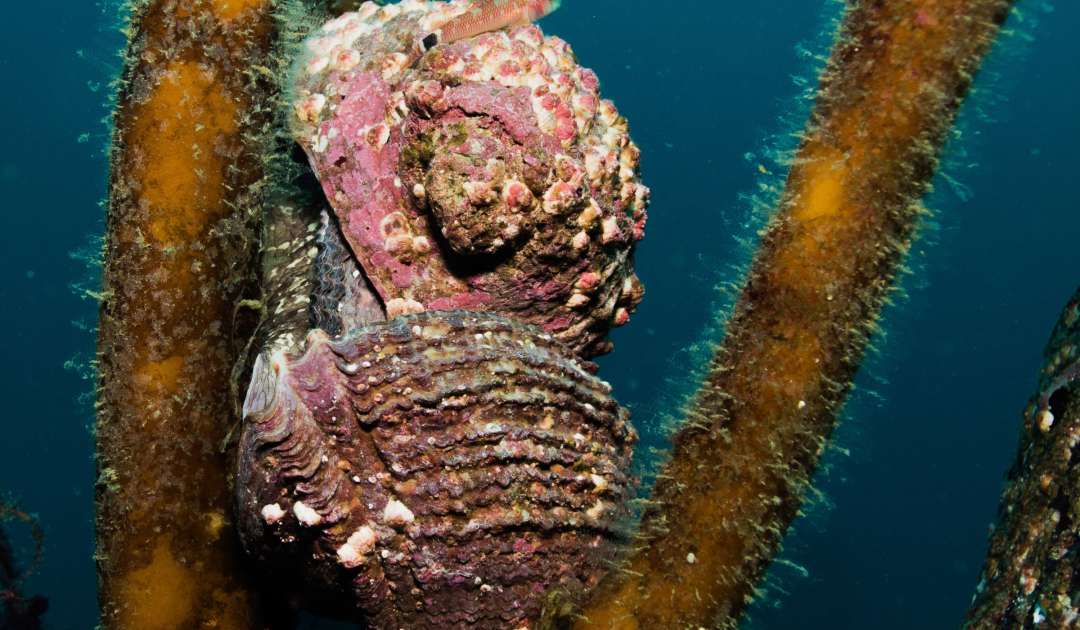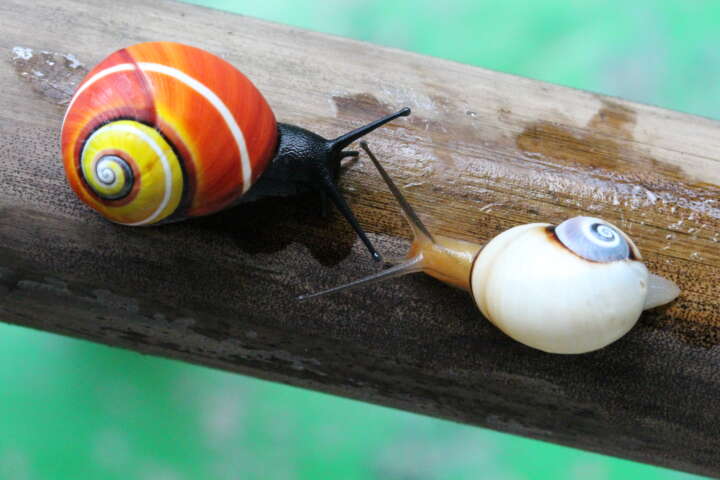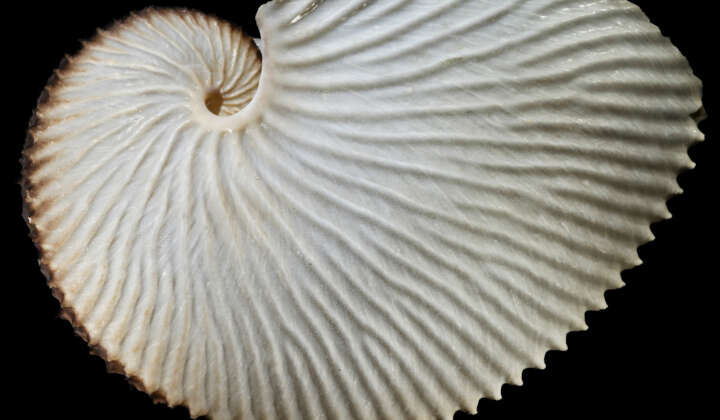The Chilean Abalone is "International Mollusc of the Year 2023"
Result of the public vote is now official
It is a large, carnivorous limpet with a heavy shell – and the “International Mollusc of the Year 2023”! The Chilean Abalone (Concholepas concholepas) received the most support in the public online voting. It was one of the five mollusc finalists in the international competition. This was the third annual competition, after its start at the end of 2020 by the Senckenberg Museum, the LOEWE Centre for Translational Biodiversity Genomics (TBG) and the International Society for Mollusc Research (Unitas Malacologica) to raise awareness of the enormous biodiversity of molluscs and the threats they face.
Both its great importance in its native regions of Chile and Peru and its special characteristics have made the Chilean Abalone the public’s favourite this year – with around 42 per cent of the votes, it passed another sea snail, a deep-sea oyster and two nudibranch species.
Concholepas concholepas belongs to the family of Murex snails, which are mostly much more spectacular seashells; Concholepas is found in the south-eastern Pacific and adult specimens can reach a shell length of about 15 centimetres. As a carnivore, it plays the role of a keystone species that controls the occurrence of other species. Known in its native country as “Loco” (a loanword of the Mapuche people in Chile), the snail with the large foot and tough shell has great cultural, social, economic, evolutionary, and ecological importance there. But its stocks are endangered due to severe overfishing, as the Chilean Abalone is traded worldwide as a delicacy.
Concholepas concholepas was nominated for the title “International Mollusc of the Year 2023” by Associate Professor Antonio Baeza. He conducts research on biodiversity, evolution, and conservation of marine organisms at the Department of Biological Sciences at Clemson University in South Carolina, USA. As the winning species of the competition, the marine snail will receive a complete sequencing of its genome by the LOEWE Centre TBG. “With the Chilean Abalone, a mollusc was selected that is interesting to study in several respects. On the one hand, the species has to adapt to adverse conditions such as exploitation and marine pollution. In addition, however, a component of its blood, the oxygen transporter haemocyanin, also shows an immunotherapeutic effect against some types of cancer,” explains jury member Dr. Carola Greve, lab manager at the LOEWE TBG Centre. “So, the genomic analysis can not only help to explore adaptation strategies and different populations in the large distribution area, but also to discover new molecules with pharmaceutical importance.”
Although molluscs form the second largest animal phylum after arthropods, the genomes of only a few mollusc species have been completely sequenced so far. Accordingly, little is known about the genomic basis for the diversity of the species, their adaptive abilities, or the natural products they produce.
After calling on scientists and laypeople to nominate interesting molluscs, the competition jury selected five species from the proposals. Afterwards, anyone interested could vote online for one of the five finalist species from March 1stto 19th, 2023.
Of the total of 4,309 votes received from all over the world, the Chilean Abalone received the most votes by a wide margin – it was voted for 1,798 times. It is followed in second place by the Wavy Bubble Snail (Micromelo undatus) with 970 votes. The giant deep-sea oyster (Neopycnodonte zibrowii) received 745 votes, the thick-horned nudibranch (Hermissenda crassicornis) 485 votes. The only land-dwelling mollusc among the nominated species, the leopard slug (Limax maximus), was voted 311 times.
“We are very pleased that so many interested people from all over the world have once again taken part in the competition. Our heartfelt thanks go to those researchers and mollusc lovers who nominated such special species,” emphasises Prof. Julia Sigwart, Section Head of the Department of Malacology at the Senckenberg Research Institute and Natural History Museum Frankfurt. “Together, we are getting closer to our goal of publicly showing the enormous biodiversity of molluscs and arousing enthusiasm for these often underestimated organisms, many of which perform important tasks in their respective ecosystems. Therefore, we also want to convey how important their protection is.”
In addition to Prof. Julia Sigwart and Dr. Carola Greve, the members of the competition jury for the “International Mollusc of the Year 2023” were again Dr. Tilman Schell, bioinformatician of the LOEWE Centre TBG, and Prof. Dr. Yasunori Kano, member of the International Society for Mollusc Research (Unitas Malacologica).
Information on the five finalist species in the “International Mollusc of the Year 2023” competition:
https://tbg.senckenberg.de/mollusc-of-the-year-2023/
Nominations for the “International Mollusc of the Year 2024” are now open:
https://tbg.senckenberg.de/mollusc-of-the-year-nominations/
Information on the previous year’s competitions:
https://tbg.senckenberg.de/molluscoftheyear-2022/
https://tbg.senckenberg.de/molluscoftheyear-2021/




